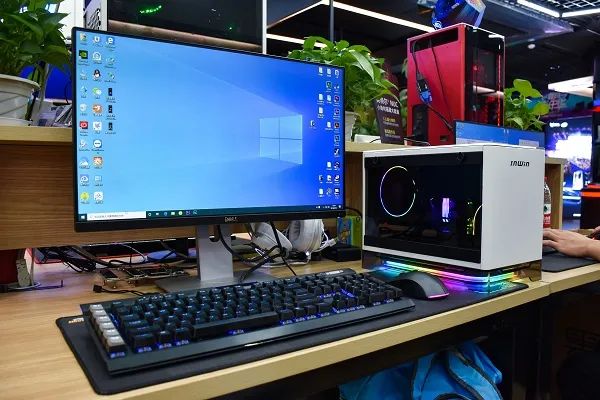Perhaps due to the dislike of full-size cases and mid-tower cases taking up too much space, more and more users are starting to pursue ultra-small computer hosts. Placing an ultra-small computer host on the desk does not take up much space and looks both compact and aesthetically pleasing. So the question arises, what do you need to know to assemble an ultra-small host? Let’s take a closer look.

1. Motherboard Size of Ultra-Small Hosts
There are three common motherboard sizes: ATX motherboard (size 24.5cm x 30.5cm), M-ATX motherboard (size 24.5cm x 24.5cm), and ITX motherboard (size 17.0cm x 17.0cm).
Choosing by size, if you want to assemble an ultra-small host, you should choose the smallest ITX motherboard. This type of motherboard is designed for extreme compactness, with both low-end chipsets and high-end chipsets available. The low-end chipsets are designed just to reduce size, while the high-end chipsets are made for extreme overclocking. Although the expandability and interface richness of ITX motherboards are quite average, their compactness makes them hard to resist.
2. Power Supply Size for Ultra-Small Hosts
To pair with the ITX motherboard, we need to select a suitable power supply. Currently, the common power supplies on the market are ATX size; however, power supplies suitable for mini cases include SFX and even smaller 1U power supplies.
Let’s take a look at the differences in power supplies:
SFX Power Supply: The output voltage and shape are similar to ATX power supplies, but the size is more compact, allowing it to fit into tighter cases. It has a very high power limit, which can basically meet any hardware’s power supply needs.
1U Power Supply: Compared to ATX power supplies, this power supply is smaller, but its stability is somewhat poorer, and its power and cooling performance are average. A too-small cooling fan can generate significant noise. If extreme compactness is not a priority, I would recommend the SFX power supply.
3. Case Size for Ultra-Small Hosts
The common case sizes from largest to smallest are: full tower, mid-tower, ATX case, mini case, and ITX case.
Since we have chosen the ITX motherboard, the case should be an ITX case specifically designed for ITX motherboards. However, it is important to note that ITX cases have certain limitations on power supply size, graphics card length, and cooler height, so when assembling an ultra-small case, you must consider hardware sizes to avoid the awkward situation of oversized components not fitting into the case.
Additionally, a new type of open-frame case has recently become popular, which provides holes for fixing at the connection points between the case and hardware. Other areas are largely hollowed out. This way, limitations on graphics card length, cooler height, and other factors are completely resolved, greatly enhancing the performance ceiling of ITX cases. The downside is that it requires frequent dust cleaning.
